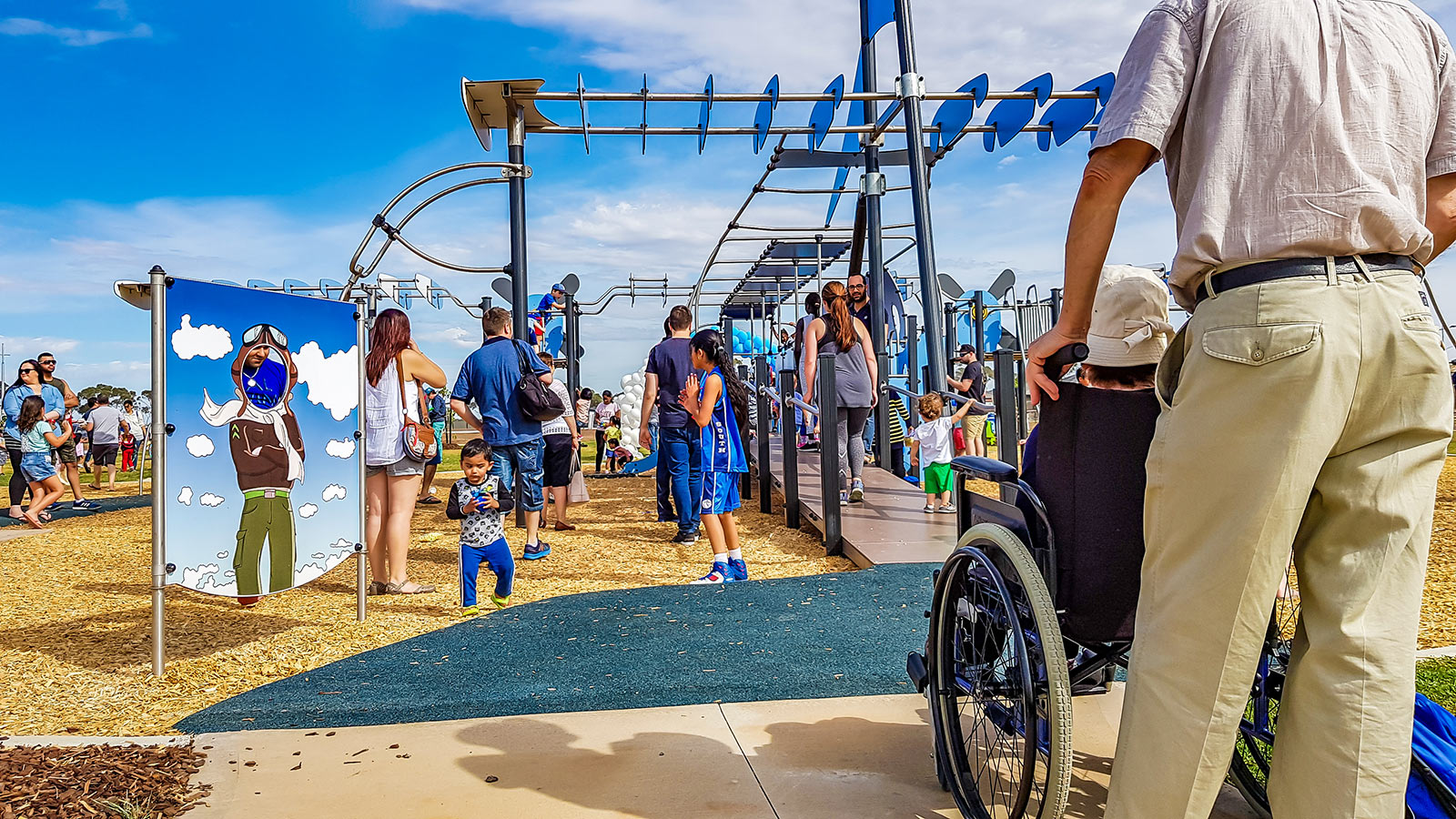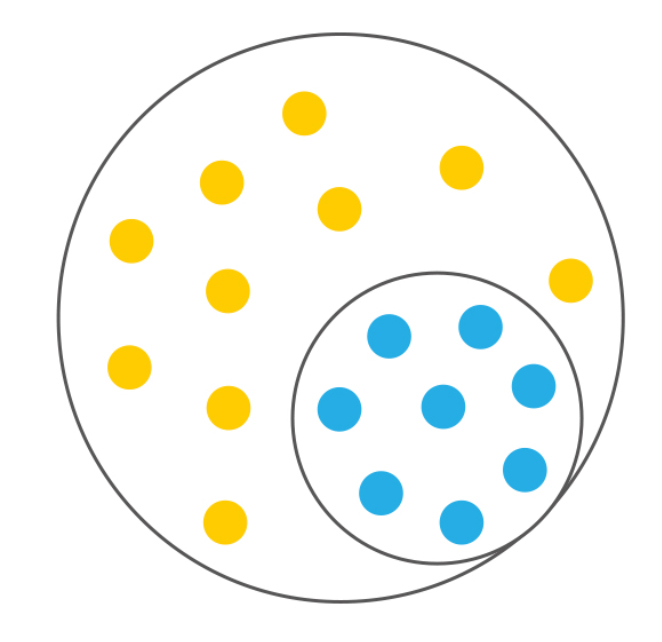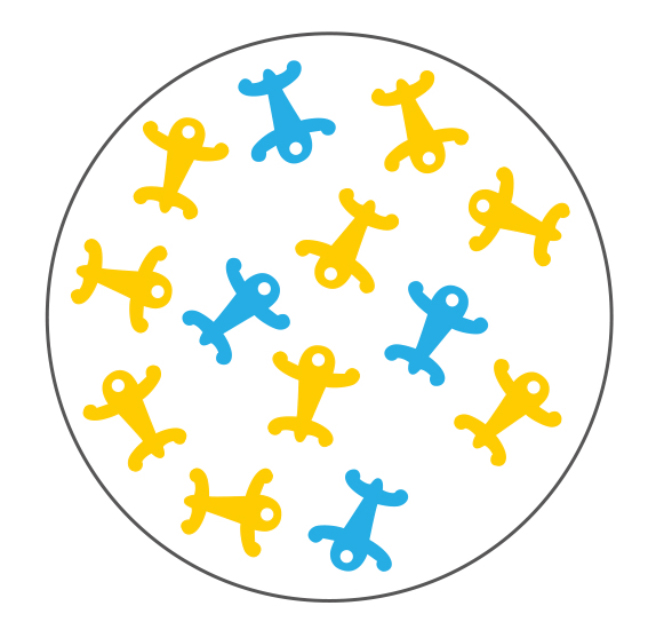Inclusive play areas, to ensure all children have access to play and the same games.
Proludic designs, manufactures and installs play areas that are accessible to all. Our exciting play equipment and dynamic playground designs allow everyone to be included, thanks to adapted products that are never stigmatising. Proludic is affiliated with NOVA CHILD, a network focusing on innovation to promote well-being for children, and has been working with universal design specialists, healthcare professionals and associations for children with disabilities to provide relevant solutions that allow everyone to grow and have fun together. Our designs have always been intended to create positive interaction between play element and child, as well as improved self-confidence, thanks to better control of their environment.
Proludic’s first 100% inclusive site – Vannes, France
Children with motor impairments
Whatever the cause of the motor impairments (multiple disabilities, paraplegia, muscular dystrophy, etc.), the disabled child must be able to stimulate his or her motor, social, sensory and cognitive development. The child must be encouraged to compensate for his or her reduced mobility, limited dexterity, and difficulties in changing or remaining in position. This is why Proludic designs play structures that put the body in motion, letting children feel the vitality of their body, while incorporating wide seats, handrails and anti-tilt areas. The simple play experiences suitable for various levels of disability give the child a good self-image.
Playing on these structures allows the child to interact with children without disabilities. Accessibility to the play structures is encouraged by the presence of a ramp, low floors, secure steps and the use of floors without slopes. There are many openings to allow for quick intervention by accompanying persons if needed.
Children with visual impairments
A lack of visual stimulation can lead to a psychomotor delay in children who are blind or visually impaired. Children who are visually impaired must be able to play in a safe environment suited to their motor skills, and that also encourages social, sensory and cognitive development. The use of bright primary colours encourages motor development and helps children locate and map out the various activities. To help understand the immediate environment, structures that help to identify shapes, sizes, weights, textures, etc. are used. This helps to reassure children with visual impairments and it is easier for them to open up to others and develop their socialisation skills. Tactile ground indicators, in the form of different types of surfacing materials, help children to find their way around. Braille is also used to explain the activities. Finally, warning elements are also incorporated, such as fenced-off spaces or changes in the surfacing, to help children easily identify the boundaries of the play area.
Children with hearing impairments
The motor development of a child who is deaf or hard of hearing can be impaired by balance or difficulty with speed or coordination tasks. To help make up for this, the play area is designed to provide visual cues to explain the instructions. A symbol code can be used, as well as structures where the usage is obvious. Interaction is encouraged to overcome the isolation that children with hearing impairments sometimes suffer from, through activities that focus on developing the child’s other senses, as well as perceiving vibrations and sensations related to moving air. Finally, to help the child to perceive danger better and to be reassured by the presence of their accompanying persons, the play area includes colour signals on the play equipment or the ground. Furniture designed for the comfort of accompanying persons is also located nearby.
Children with cognitive disability
Although the motor development of children with a cognitive disability is generally comparable to that of children without, there is always a degree of difference between their age and their reasoning abilities.
Inclusive play areas must feature structures with simple shapes and colours as well as a logical layout. It must also be designed to help develop children’s fine motor skills, which are often affected. One way to do this is by offering simple activities with different levels of difficulty to overcome. For younger children, play structures that target the development of sensory awareness provide stimulation that can help compensate for the discrepancies between the child’s age, body, actions and perceptions. Finally, to make sure that children feel confident and safe, the play area is designed to allow the quick intervention of an accompanying person, as well as furniture that is designed for their comfort.
Children with an autism spectrum disorder
Children on the autism spectrum may have difficulty with social relations and find it hard to communicate and interact with other people. This can vary, depending on the child, but social interaction, even if it is difficult, is always beneficial. This is why play areas allow the creation of visual cues and habits, which are very important for the well-being of the autistic child, who needs routine. The use of colour, the physical separation of structures and a logical path through the play area are all used in order to accommodate for those children who rely on structure for comfort and reassurance. The play area has only one entrance and one exit to provide children with a structured, stable and reassuring environment. Competition between children is to be avoided, but progression within the play activity should be encouraged. Finally, for children feeling over-whelmed, the play area offers spaces that allow children to recover, and take a break from others. And, as with all our play areas, furniture is provided for accompanying persons, allowing them to get the child quickly and easily.






